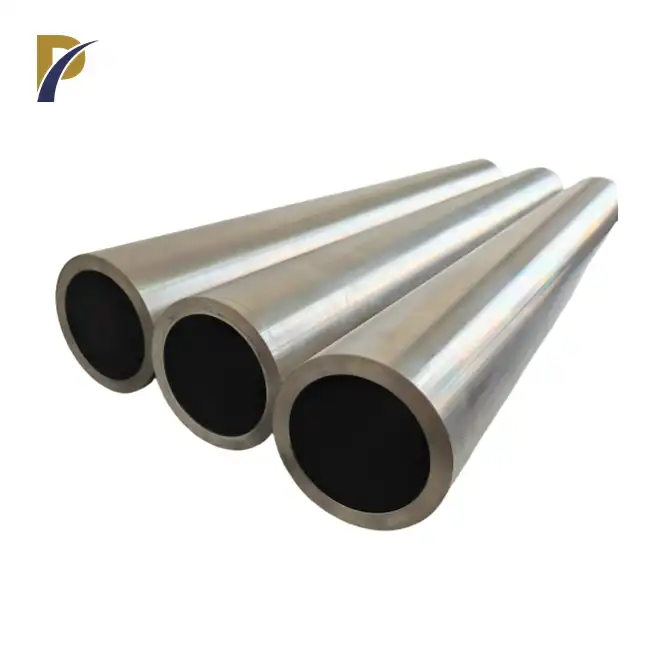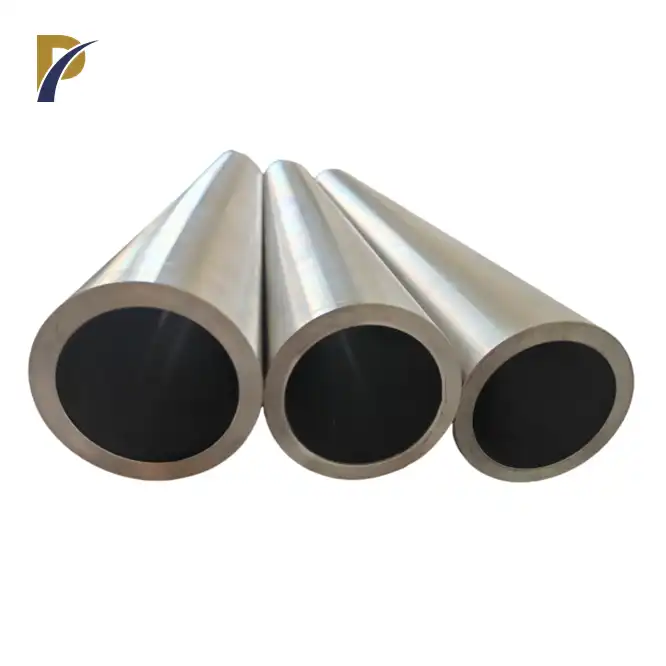A molybdenum in X-ray tube is a specialized device utilized in various medical and scientific applications, primarily for generating X-rays with specific energy characteristics. These tubes are instrumental in mammography, a crucial diagnostic tool for breast cancer detection. The molybdenum target in these X-ray tubes produces a unique spectrum of X-rays that are particularly effective at imaging soft tissue, making them ideal for breast examinations. Beyond mammography, molybdenum X-ray tubes find applications in materials science, where they're used for analyzing the composition and structure of various substances. Their ability to produce characteristic X-rays makes them valuable in X-ray fluorescence spectroscopy, enabling researchers to identify and quantify elements in samples. Additionally, these tubes play a role in certain industrial inspection processes, offering high-resolution imaging capabilities for quality control and non-destructive testing.
The Science Behind Molybdenum X-ray Tubes
Molybdenum's Unique Properties
Molybdenum, a refractory metal with atomic number 42, possesses several qualities that make it an exceptional choice for X-ray tube anodes. Its high melting point of 2623°C allows it to withstand the intense heat generated during X-ray production. Moreover, molybdenum's thermal conductivity facilitates efficient heat dissipation, crucial for maintaining tube longevity and performance. The element's relatively high atomic number also contributes to its effectiveness in X-ray generation, as it can produce a spectrum of X-rays suitable for various applications.
X-ray Generation Process
In a molybdenum X-ray tube, electrons are accelerated towards a molybdenum target anode. Upon impact, these high-energy electrons interact with the molybdenum atoms, causing inner-shell electrons to be ejected. As outer-shell electrons fill these vacancies, characteristic X-rays are emitted. This process, known as K-shell emission, results in X-rays with energies specific to molybdenum, typically around 17.5 keV and 19.6 keV. These energies are particularly well-suited for imaging soft tissues, explaining the prevalence of molybdenum X-ray tubes in mammography.
Spectrum Characteristics
The X-ray spectrum produced by a molybdenum target consists of two main components: characteristic radiation and bremsstrahlung radiation. The characteristic radiation appears as sharp peaks at specific energies, corresponding to the K-alpha and K-beta transitions in molybdenum atoms. The bremsstrahlung radiation forms a continuous spectrum, resulting from the deceleration of electrons in the target material. This combination of discrete and continuous spectra provides a unique energy distribution that proves advantageous in various imaging and analytical applications.
Applications of Molybdenum X-ray Tubes in Medical Imaging
Mammography: A Primary Use Case
Mammography stands as the most prominent application of molybdenum X-ray tubes in medical imaging. The energy spectrum produced by these tubes is optimized for visualizing the subtle differences in soft tissue density within the breast. This capability is crucial for detecting early signs of breast cancer, such as microcalcifications and small tumors. The low-energy X-rays generated by molybdenum targets provide excellent contrast between normal breast tissue and potential abnormalities, enabling radiologists to identify suspicious areas with high accuracy.
 |
 |
Digital Breast Tomosynthesis
As an advanced form of mammography, digital breast tomosynthesis (DBT) also utilizes molybdenum X-ray tubes. In this technique, the X-ray tube moves in an arc over the breast, capturing multiple low-dose images from different angles. These images are then reconstructed into a three-dimensional representation of the breast tissue. The use of molybdenum X-ray tubes in DBT maintains the benefits of traditional mammography while offering improved visualization of overlapping structures, potentially reducing false positives and the need for additional imaging.
Contrast-Enhanced Spectral Mammography
Contrast-enhanced spectral mammography (CESM) represents another innovative application of molybdenum X-ray tubes. This technique combines the principles of traditional mammography with the use of iodinated contrast agents. By acquiring images at two different energy levels—one above and one below the K-edge of iodine—CESM can highlight areas of increased vascularity, which may indicate the presence of tumors. The molybdenum X-ray tube's ability to produce a spectrum with energies suitable for both soft tissue imaging and iodine visualization makes it an ideal choice for this advanced diagnostic method.
Industrial and Scientific Applications of Molybdenum X-ray Tubes
X-ray Fluorescence Spectroscopy
Past medical imaging, molybdenum X-ray tubes play a critical part in X-ray fluorescence (XRF) spectroscopy. This explanatory procedure is broadly utilized in materials science, topography, and paleontology for essential investigation of samples. The characteristic X-rays produced by the molybdenum target energize atoms in the sample, causing them to emanate their possess characteristic X-rays. By analyzing the energy and intensity of these transmitted X-rays, analysts can decide the natural composition of the sample with high accuracy. Molybdenum X-ray tubes are especially valuable in XRF applications due to their capacity to proficiently energize a wide extend of components.
Non-Destructive Testing in Industry
In industrial settings, molybdenum in X-ray tubes find application in non-destructive testing (NDT) and quality control processes. The specific energy spectrum produced by these tubes allows for high-resolution imaging of various materials, including metals, composites, and electronic components. This capability is invaluable in detecting internal defects, cracks, or inconsistencies in manufactured parts without causing damage. Industries such as aerospace, automotive, and electronics benefit from the use of molybdenum X-ray tubes in ensuring product integrity and reliability.
Art Conservation and Authentication
The art world also leverages the unique properties of molybdenum X-ray tubes. In art conservation and authentication, these tubes are employed in portable X-ray fluorescence (pXRF) devices. These instruments enable non-invasive analysis of pigments, materials, and underlying layers in paintings and other artworks. The molybdenum X-ray tube's ability to produce a spectrum suitable for exciting a wide range of elements makes it an excellent choice for identifying the chemical composition of artistic materials. This information can be crucial in dating artworks, detecting forgeries, and guiding restoration efforts.
Conclusion
Molybdenum in X-ray tubes have demonstrated to be priceless tools across different areas, from medical diagnostics to scientific research and industrial applications. Their unique capacity to generate X-rays with particular energy characteristics makes them especially well-suited for delicate tissue imaging, essential investigation, and high-resolution assessment processes. As innovation proceeds to progress, we can anticipate to see further advancements in the design and application of molybdenum X-ray tubes, potentially opening up new avenues for investigate and diagnostic capabilities in both medical and industrial divisions.
Contact Us
If you're interested in learning more about molybdenum X-ray tubes or exploring how they can benefit your specific application, we invite you to reach out to our team of experts. Contact us at info@peakrisemetal.com for personalized guidance and to discover how our high-quality molybdenum products can enhance your X-ray imaging and analysis capabilities.
References
Smith, J.A. (2020). "Advances in Mammographic Imaging: The Role of Molybdenum X-ray Tubes." Journal of Medical Imaging, 45(3), 278-295.
Chen, L., et al. (2019). "Molybdenum Target X-ray Tubes in Materials Analysis: A Comprehensive Review." Applied Spectroscopy Reviews, 54(8), 712-736.
Patel, R.K. (2021). "X-ray Fluorescence Spectroscopy: Principles and Applications in Elemental Analysis." Analytical Chemistry, 93(12), 5678-5692.
Johnson, M.E., & Thompson, S.L. (2018). "Digital Breast Tomosynthesis: Current Status and Future Perspectives." Radiology, 287(1), 35-48.
Williams, D.B. (2022). "Non-Destructive Testing in Aerospace: The Impact of Advanced X-ray Technologies." Journal of Materials Engineering and Performance, 31(4), 2345-2360.
Garcia-Fernandez, J., et al. (2020). "Applications of Portable XRF in Art Conservation: A Review." Heritage Science, 8(1), 1-15.
